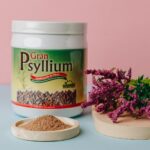The holiday season can bring up a mix of emotions around our eating habits. With all the marketing strategies around holiday-themed foods on social media, TV commercials, festivals, parties, and grocery stores, it can be difficult to stay on track.
Here are some helpful tips that can help you become confident in your eating choices while enjoying the treats you love.
6 Quick Tips to Mindful Holiday Nutrition
- Release your responsibility of needing to try every holiday-themed item that is served at a party, event, or at the grocery store.
- Read the ingredients, the nutrition facts, and the serving sizes of each item to monitor your calorie, carbohydrate, and added sugar intake.
- Pre-portion your snacks and treats into small bags to avoid overconsumption.
- If you are attending holiday events, scan the area of all the food. Select 3-4 of your favorites to put on your plate.
- Try to limit holiday treats to 1-2 times a week. Holiday treats and drinks are often loaded with added sugars that go over the recommended daily limit for sugar consumption (25g for adult women, 36g for adult men).
- Taking a 10-minute walk after eating a meal can help control your blood sugar.
Creating Boundaries During the Holiday Season
Focusing on nutrition can be difficult throughout the year, but it can be extremely difficult around the holidays. Companies are marketing and selling tons of food, parties are being hosted by friends, family, and coworkers, and lots of festivals are being held in the community.
During these times, it is helpful to surround yourself with like-minded people who will help you stay accountable with your food choices.
In addition, you will have to say “no” to people who offer you excessive selections of chips, cookies, cakes, pies, cobblers, etc.
Creating boundaries is not meant to deprive you of enjoying occasional treats but to help you maintain your long-term health goals.
If you need extra support with this, reach out to a health coach and/or a registered dietician for help.
Being Mindful of the Types of Sugar Included In Holiday Foods and Drinks
It’s no secret that most of the holiday desserts, snacks, and drinks contain loaded amounts of sugar.
Most of us probably know about the most common added sugars, such as high fructose corn syrup, brown sugar, cane sugar, honey, and maple syrup.
However, did you know that there are at least 75 different types of sugar that could be listed in the ingredients section in most packaged foods?
Recognizing these alternate names of sugar can create more awareness of our sugar intake and become more mindful eaters during the holiday season.
Check out the list below to review the different types of sugar:

You Can Enjoy Holiday Foods and Reap The Nutritional Benefits
Some of the most popular holiday foods have a significant amount of macronutrients, vitamins, and minerals. Keep in mind that eating a balanced amount of protein, carbs, and healthy fats is a key factor in maintaining a healthy lifestyle during this time of year.
Do you look forward to your roasted turkey each year? Turkey has a significant amount of protein and contains great sources of vitamins and minerals, such as Vitamin B3 (Niacin), Vitamin B6 (Pyridoxine), Vitamin B12 (Cobalamin), Zinc, Selenium, and Phosphorus.
Are you looking to add more green side dishes to the table, such as Brussels sprouts, collard greens, turnip greens, and cabbage? These heart-healthy foods are packed with Vitamin A, Vitamin C, Vitamin K, potassium, iron, and calcium.
You may love the warm taste of sweet potatoes during the fall season. These nutritious vegetables are loaded with Vitamin A, Vitamin C, Vitamin B6 (Pyridoxine), Vitamin B5 (Pantothenic Acid), Vitamin B3 (Niacin), Manganese, Copper, and Potassium.
Sweet potatoes also contain a good amount of fiber, antioxidants that can protect your body from free radicals, and help with gut health.
Do you enjoy cranberry sauce with your stuffing or dressing dish? Cranberries are very high in antioxidants and have a high water content of 90%. They are a good source of Vitamin C, Vitamin K, Vitamin E, Copper, and Manganese.
If purchasing cranberry sauce from the grocery store, be sure to watch the sugar content and eat moderate amounts.
Pumpkin is one of the most popular, low-calorie foods during the fall season. Many people enjoy this food as a pie dish during Thanksgiving. This food is packed with many vitamins and minerals, such as Vitamin A, Vitamin K, Vitamin E, Copper, Iron, and Magnesium.
Butternut Squash is another popular, low-calorie food that many people enjoy. It has a good source of Vitamin A, Vitamin C, Vitamin E, Vitamin B1 (Thiamine), Vitamin B3 (Niacin), Vitamin B6 (Pyridoxine), and Vitamin B9 (Folate). It also has a good amount of minerals, such as Magnesium, Manganese, and Potassium.
The Most Important Holiday Nutrition Tip to Remember
Please note that popular foods may vary with each individual, family, region, culture, and country. Whatever foods you decide to prepare and consume, the most important thing is to enjoy them with your loved ones and create great memories.
As you are going through this holiday season, here is a reminder to give yourself grace and not restrict yourself too much. The food that you eat is fuel for your body, so feed it well and take care of the one and only body that you have.








